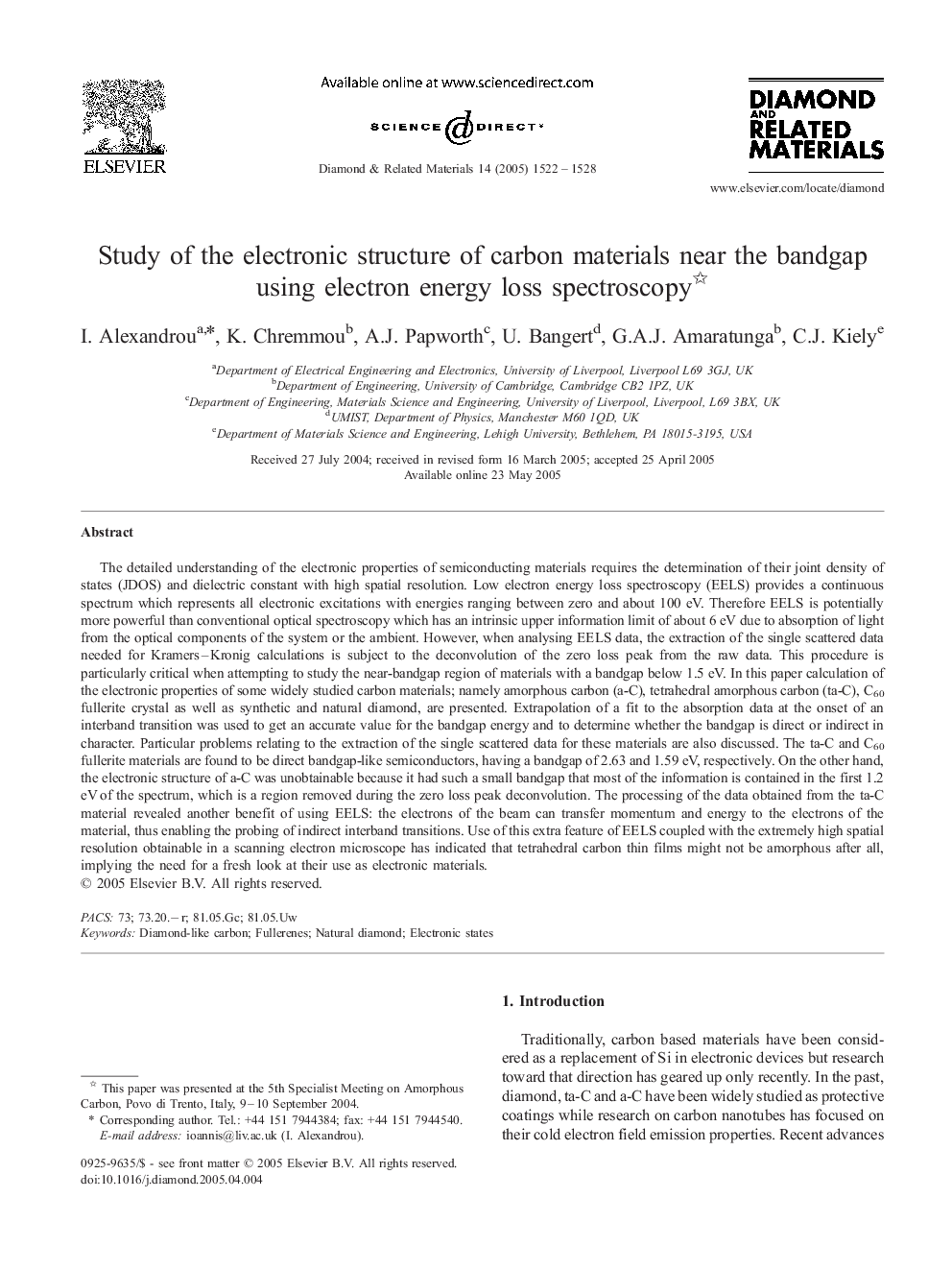| کد مقاله | کد نشریه | سال انتشار | مقاله انگلیسی | نسخه تمام متن |
|---|---|---|---|---|
| 10401224 | 891166 | 2005 | 7 صفحه PDF | دانلود رایگان |
عنوان انگلیسی مقاله ISI
Study of the electronic structure of carbon materials near the bandgap using electron energy loss spectroscopy
دانلود مقاله + سفارش ترجمه
دانلود مقاله ISI انگلیسی
رایگان برای ایرانیان
کلمات کلیدی
موضوعات مرتبط
مهندسی و علوم پایه
سایر رشته های مهندسی
مهندسی برق و الکترونیک
پیش نمایش صفحه اول مقاله

چکیده انگلیسی
The detailed understanding of the electronic properties of semiconducting materials requires the determination of their joint density of states (JDOS) and dielectric constant with high spatial resolution. Low electron energy loss spectroscopy (EELS) provides a continuous spectrum which represents all electronic excitations with energies ranging between zero and about 100 eV. Therefore EELS is potentially more powerful than conventional optical spectroscopy which has an intrinsic upper information limit of about 6 eV due to absorption of light from the optical components of the system or the ambient. However, when analysing EELS data, the extraction of the single scattered data needed for Kramers-Kronig calculations is subject to the deconvolution of the zero loss peak from the raw data. This procedure is particularly critical when attempting to study the near-bandgap region of materials with a bandgap below 1.5 eV. In this paper calculation of the electronic properties of some widely studied carbon materials; namely amorphous carbon (a-C), tetrahedral amorphous carbon (ta-C), C60 fullerite crystal as well as synthetic and natural diamond, are presented. Extrapolation of a fit to the absorption data at the onset of an interband transition was used to get an accurate value for the bandgap energy and to determine whether the bandgap is direct or indirect in character. Particular problems relating to the extraction of the single scattered data for these materials are also discussed. The ta-C and C60 fullerite materials are found to be direct bandgap-like semiconductors, having a bandgap of 2.63 and 1.59 eV, respectively. On the other hand, the electronic structure of a-C was unobtainable because it had such a small bandgap that most of the information is contained in the first 1.2 eV of the spectrum, which is a region removed during the zero loss peak deconvolution. The processing of the data obtained from the ta-C material revealed another benefit of using EELS: the electrons of the beam can transfer momentum and energy to the electrons of the material, thus enabling the probing of indirect interband transitions. Use of this extra feature of EELS coupled with the extremely high spatial resolution obtainable in a scanning electron microscope has indicated that tetrahedral carbon thin films might not be amorphous after all, implying the need for a fresh look at their use as electronic materials.
ناشر
Database: Elsevier - ScienceDirect (ساینس دایرکت)
Journal: Diamond and Related Materials - Volume 14, Issue 9, September 2005, Pages 1522-1528
Journal: Diamond and Related Materials - Volume 14, Issue 9, September 2005, Pages 1522-1528
نویسندگان
I. Alexandrou, K. Chremmou, A.J. Papworth, U. Bangert, G.A.J. Amaratunga, C.J. Kiely,